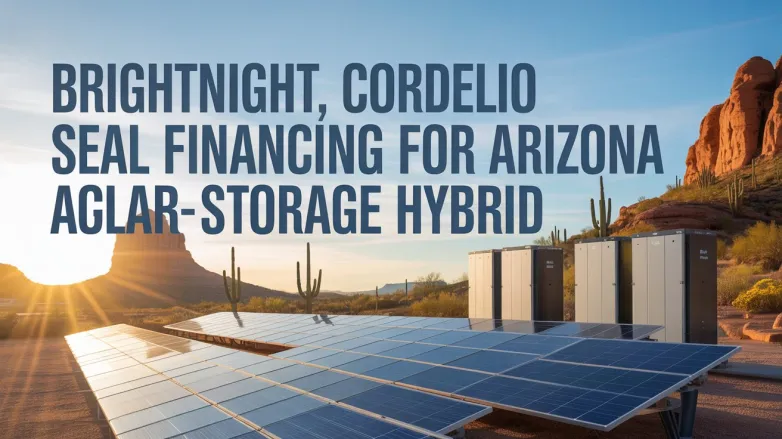BrightNight, Cordelio Seal Financing for Arizona Solar-Storage Hybrid
- BrightNight and Cordelio greenlight a 300 MW solar + 300 MW/1,200 MWh battery hybrid in Arizona, shifting sun to evening peaks and bolstering Southwest reliability, advancing decarbonization.

BrightNight and Cordelio Power reached financial close on a hybrid project in Arizona pairing 300 MW of solar with 300 MW/1,200 MWh of battery storage. The joint venture milestone clears the way for construction of the solar-plus-storage facility, designed to deliver utility-scale renewable power and grid services.
The 4-hour storage system will enable shifting solar generation into evening peak demand, improving reliability and firming output. The project underscores accelerating investment in large U.S. hybrid assets as developers scale dispatchable clean energy to meet regional demand growth and decarbonization goals in the Southwest. Financial terms, offtake arrangements, and timeline were not disclosed.
How will this 300 MW solar-plus-1,200 MWh battery enhance Arizona’s evening reliability?
- Delivers up to 300 MW of dispatchable output for four hours, covering the 5–9 p.m. peak when solar wanes and air‑conditioning load stays high
- Smooths the late‑day “duck curve” ramp by charging at midday and discharging through sunset, easing strain on fast‑ramping thermal units
- Reduces dependence on expensive gas peakers during evening peaks, preserving fuel and lowering forced‑outage risk from frequent starts
- Provides operating reserves, fast frequency response, and voltage support during heat‑driven evening stress, improving grid stability
- Offers firm capacity accreditation for resource adequacy, strengthening reserve margins during the most constrained hours
- Damps price spikes and volatility after sunset, improving predictability for utilities and large customers
- Enhances resilience to monsoon clouds and dust storms that cut late‑day solar output, maintaining service continuity
- Supports black‑start and grid‑forming capabilities (if configured), improving recovery after disturbances
- Helps defer some transmission and distribution upgrades by shaving local evening peaks near load centers
- Lowers system emissions in the evening block by shifting zero‑carbon energy into peak hours, displacing higher‑emitting generators
Also read

